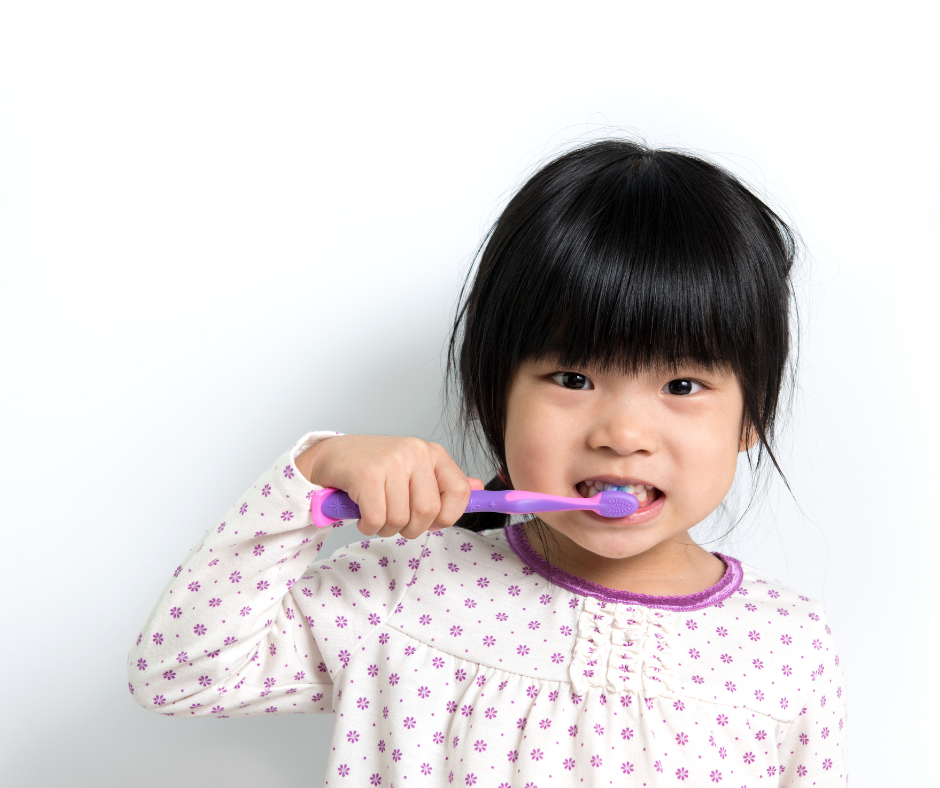Your little one just popped their first tooth – so cute! It is a big deal when your little one starts getting teeth. Teeth are important to a child’s overall health as they help your child not only eat but talk, too. If a child learns poor oral health habits, that can lead to future infection, disease, or other teeth problems. We don’t want that! Besides waiting for the rest of those pearly whites to pop, there are other things you can be doing to help your baby’s dental hygiene.
From First Tooth to Independence: When Should a Child Brush Their Own Teeth?
You can start using a soft child-sized toothbrush around the age of one or two. You can wash your child’s teeth (or tooth) with water or use a small dab of toothpaste that doesn’t have fluoride in it. Fluoride should not be swallowed, so avoid any fluoride-based toothpaste until your child doesn’t swallow any leftover spit and/or toothpaste while brushing. This is also the time you should start to find a dentist for your little one. The American Academy of Pediatric Dentistry recommends children see a dentist around their first birthday.
At their appointment, the dentist will talk more about dental hygiene and the role of fluoride in your child’s life. Once a child gets older, they can learn how to brush their own teeth (often with your help). It is not abnormal for a child to need help brushing their teeth until they are 7 or 8 years old so don’t worry if your child continues to need help!
Toddler Won’t Brush Teeth? Try These Fun Strategies!
- Let children help choose their own toothbrush. They can pick one with their favorite color or character on it.
- Let children help choose the toothpaste they use. They can pick their favorite flavor.
- Read books or watch videos that talk about dental hygiene.
- Use a timer to make sure kids brush their teeth for 2 minutes or play their favorite song to help keep track of time.
- Reward children for good oral care. Offer something healthy or simple, like apple slices or a gold star.
- Plan a fun activity following your child’s dentist visits. Ask your dentist if you could take a tour of the office prior to their first cleaning.
Avoiding Cavities
One big reason we want to teach children good dental hygiene is so they can avoid getting a dreaded cavity! A cavity is a hole that forms in teeth and can occur when germs build up in the mouth. Sugar in food and drinks turns into acid which can also eat away at teeth. Along this line, it’s a good idea to keep any bottles or sippy cups out of your child’s bed. The sugars in the milk and juice will pool in the mouth and can destroy the roots of their teeth even before the teeth come through. Dentists call this “baby bottle mouth” and the result is teeth that are dark gray and damaged. Children are at higher risk for cavities because their teeth can be harder to brush. Your child may be at higher risk for cavities if they don’t go to the dentist often, were more premature or had a low birth weight, or have ongoing special healthcare needs. This doesn’t mean a child will automatically have a cavity if they fall into one of those categories; it just means care providers should be aware of these risk factors and help our child with their dental hygiene.
As always, please reach out to a Family Support Navigator at navigation@familyfutures.net if you have questions about this topic or would like some suggestions on how to incorporate this into your daily routine. We would love to help! Stay calm and brush on. 😊
